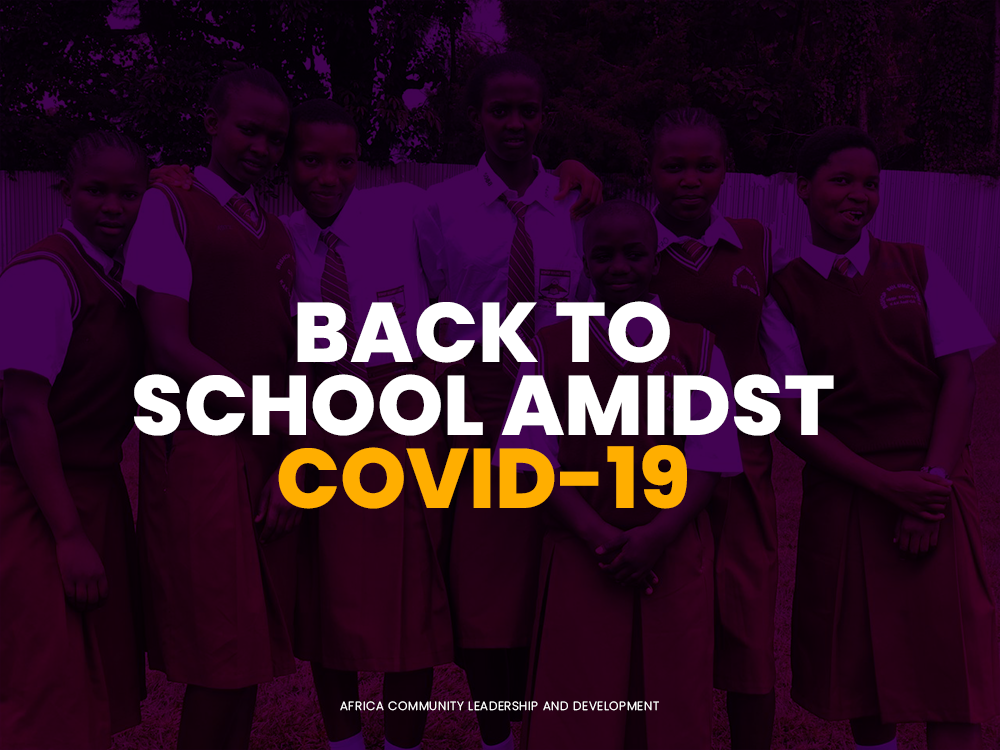Back to school amidst COVID-19

The COVID-19 pandemic experienced globally since late 2019 caused many day-to-day activities to come to a complete halt. These activities included closure of learning institutions. In Kenya, schools were closed in late March 2020 when the first few cases of COVID-19 were reported in the country, and re-opened in January 2021, with learners and teachers expected to follow the laid-down government directives of physical distance, hand-washing and sanitizing as well as wearing of face-masks.
Many of the schools were ill-prepared for the re-opening of schools in that there were no extra classrooms or dormitories built and furnished in order to ensure physical distance of the learners within the schools. The result of this is that learners in some schools are forced to have their classes under trees in the school compound to ensure that physical distance of one meter between persons is maintained as suggested by Kenya’s Cabinet Secretary for Education, George Magoha. This solution is not quite conducive as weather patterns in Kenya are known to change abruptly, and the rain can pour without warning, which disrupts the lesson as learners and teachers seek appropriate shelter. In addition, not all schools have trees under which to hold classes, and the early morning chilly weather may not be suitable for learners having their lessons outside as it exposes them to risk of catching colds and flu, especially for those whose lessons begin as early as 6.30am in a bid to catch up on the curriculum after the long break. Open-air learning also comes with another challenge-the changing position of the sun during the course of the day. Does this mean that learners rotate around the tree to keep up with the moving shade? I don’t know!
In some areas of Kenya’s Rift Valley, learners are facing a double tragedy as the rising waters of the lakes has left their schools engulfed in their waters, and once populated classrooms have been marooned and are now home to fish, crocodiles and hippos. The learners in the affected regions had no schools to go back to once the government announced resumption of classes. Local media reported that some learners did not return to school for fear of having lagged behind as they did not participate in the online classes that were going on during the school closure. Despite the challenges that the students are facing in terms of physical distance and the adjustment to the laid-down guidelines for controlling the spread of COVID-19 within the learning environment, they are pleased to be back in school and among their friends after an almost ten month holiday.
Catherine Muteithia
ACLAD Media Consultant
